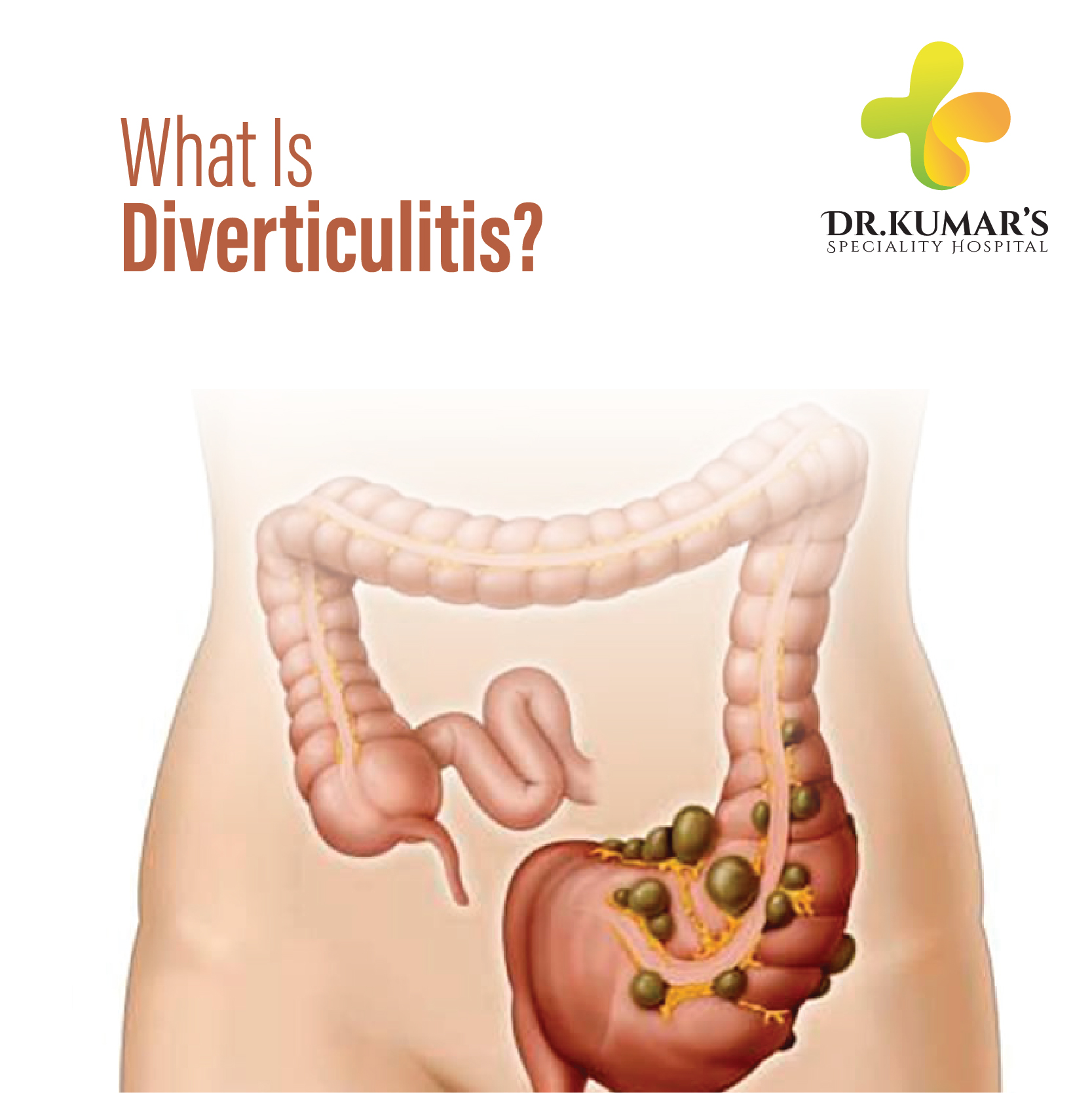
At times some small bulged pouches may form in the colon, which is known as diverticula. This condition is called diverticulosis. If the pouches remain normal it is not a problem, but they quickly tend to get infected, and then the condition is called diverticulitis.
Symptoms of diverticulitis
When a patient is suffering from diverticulosis there are no outward symptoms. When the condition progresses to diverticulitis then symptoms are noticed. There will be abdominal bloating, pain and tenderness, especially in the left lower abdomen. This will be accompanied by diarrhoea, chills, and fever.
What causes diverticula?
Diverticula are formed when high-pressure areas inside the colon push against the weak spots on the colon wall. These diverticula tend to occur mostly in the lower part of the large intestine called the sigmoid colon.
Difference between Diverticulosis and Diverticulitis
Generally, diverticulosis is a widespread occurrence in may people, and they never come to know of it. People aged 60 years and above will definitely have diverticulosis.
Among those in these age group around 10% to 25% develop diverticulitis. When diverticula are blocked with waste they become inflamed, which can scar the bowel wall and lead to infection resulting in diverticulitis.
Diverticular bleeding
As diverticulitis progresses it can cause a tear in the region between a pouch and a blood vessel; when this happens it causes bleeding. This results in large amount of blood in the stool. The condition though is painless and will stop on its own. In rare cases, the bleeding can turn severe enough to require blood transfusion for the patient or even surgery.
Fiber is a cure
When a diet is low in fiber it is a signal for the onset of diverticulosis. Constipation may be the reason for this, and adding more fiber to the diet can help prevent constipation. Thus reducing the painful diverticula formation in the colon.
What is rich in fiber?
Fiber is abundant in fruits, vegetables, whole grains and legumes (beans, peas, lentils). Brown rice and whole-wheat pasta are the right choices. More veggies in your pizzas, stews, and spaghetti also help. It is recommended that women should consume a minimum of 25 grams of fiber and men, about 38 grams daily.
How are diverticula diagnosed?
By now, we know that diverticulosis does not cause symptoms; it is found while examing for some other condition. Diverticula can be seen in an X-ray of colonoscopy. When diverticulitis causes a painful abscess, the pus formation can be seen in an ultrasound and CT scan.
Treatment for diverticulosis
As far as the condition remains in the diverticulosis stage there are minimal or no symptoms. This condition does not require specific treatment. The only suggestion from the doctor would be to start eating a high-fiber diet. This will prevent constipation and the formation of diverticula.
Treating diverticulitis
Diverticulitis symptoms can be treated with oral antibiotics. When the pain is severe, a clear liquid diet is recommended. Giving time for the colon and bowel to recover may be enough. When the pain is aggravated, there is high fever and the inability to drink even water, then hospitalization is the best choice.
Preventing diverticulitis
Diets high in fiber increases stool bulk and prevent constipation, which may help symptoms though diverticula once formed is permanent. There is no evidence that nuts and seeds flare up the disease, but if you feel so avoid it. Drink plenty of water and get regular exercise too.
